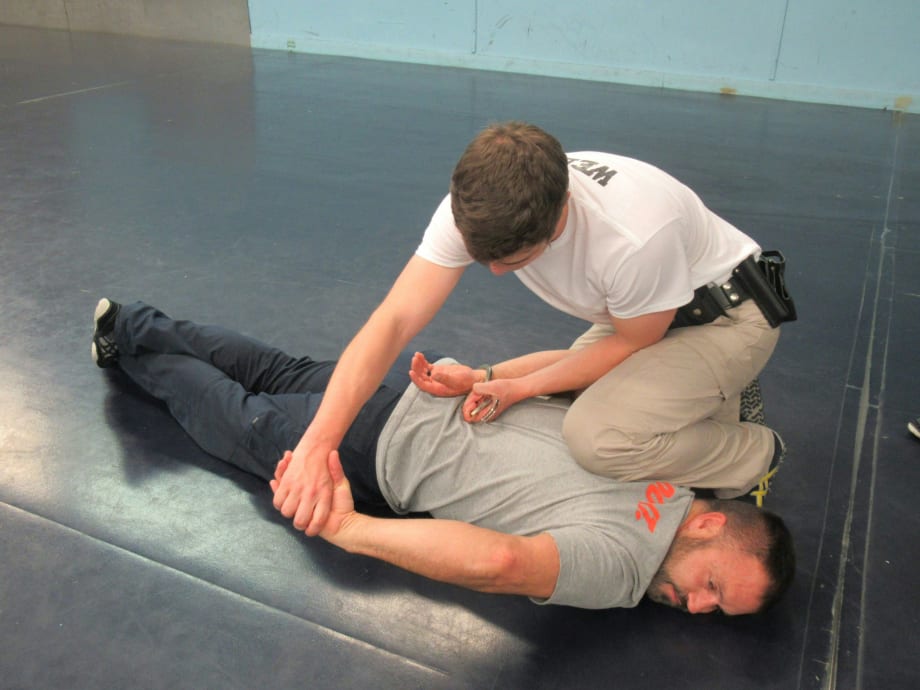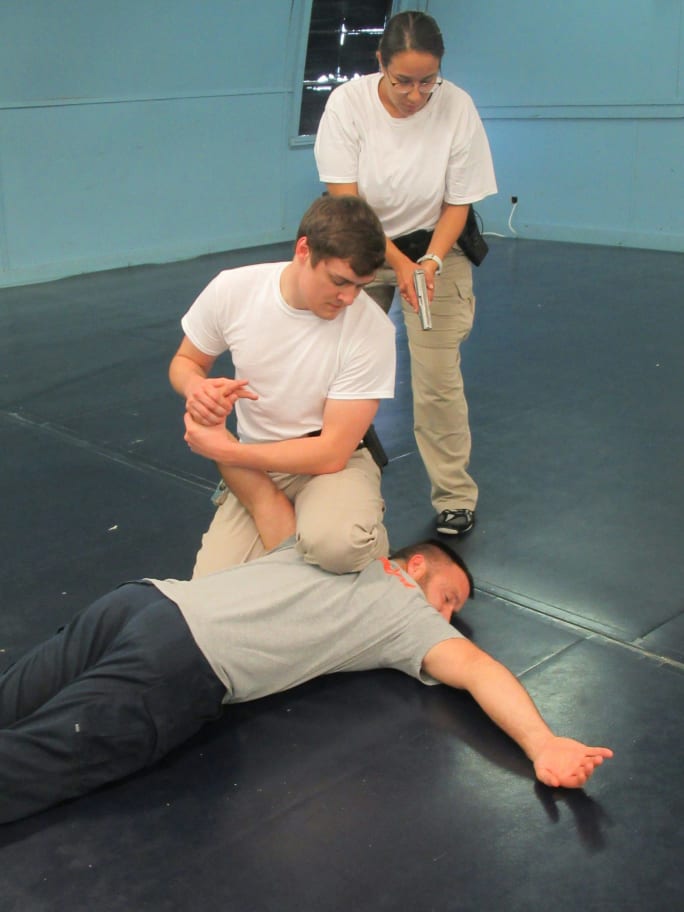Having arrived beside the arrestee, the control officer should maintain control of the suspect by securing the arrestee's arm at the wrist and elbow. Standing in a good base, apply upward pressure on the wrist and downward pressure at the elbow. It is important for the arrestee's hand to face palm-up.
While maintaining this pressure, mount the arrestee by placing your shin across the suspect's back and controlling the arm, enabling pain compliance with gooseneck control at the wrist. Should the arrestee begin to resist, maintain control by driving the arm downward and apply pain compliance through the wrist manipulation. That said, no tactics work every time; be aware that the control officer may need to disengage.
Once the control officer has mounted the arrestee, the cover officer should keep their pistol at the low ready, pointing toward the ground, off the suspect's head or upper torso area. The cover officer should stand at the same angle as the cover officer's leg closest to the suspect's head to allow a safer transition should they need to bring their pistol up for use. This will help keep them from covering their partner with the pistol and keep the control officer from being shot should the cover officer swing their pistol too far side to side.
The control officer must maintain control by placing the first cuff on the arm they are controlling. After the first cuff is on, while maintaining control, the control officer should ask the arrestee to slowly place their other hand behind their back. The control officer should then grab ahold of the arrestee's hand before it reaches the arrestee's body.
After handcuffing the suspect, the control officer should search the area near the arrestee's hands to make sure no other weapons are within reach.













